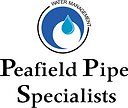When it comes to ensuring the structural integrity and safety of pressurized systems, two common methods are often employed: hydrostatic pressure testing and pneumatic pressure testing. These testing techniques are critical in various industries, from oil and gas to manufacturing and construction. In this article, we will delve into the differences, advantages, and disadvantages of hydrostatic pressure testing and pneumatic pressure testing to help you determine which is the best fit for your specific project.
What Is Hydrostatic Pressure Testing?
Hydrostatic pressure testing, also known as hydrotesting, is a widely used method for assessing the strength and reliability of pressure vessels, pipelines, and other components that will be subjected to high-pressure conditions during their operational life. This method involves filling the system with a liquid, typically water, and pressurizing it to levels well above its maximum operating pressure.
Advantages of Hydrostatic Pressure Testing
Realistic Simulation: One of the primary advantages of hydrostatic testing is that it closely simulates real-world conditions. Since most pressurized systems will contain liquids, testing them with water provides a realistic representation of what they will endure during operation.
Safe and Non-Hazardous: Water is a safer testing medium compared to gases. It eliminates the risk of potential explosions or fires associated with pneumatic testing, making it a preferred choice in industries where safety is paramount.
Accurate Leakage Detection: Hydrostatic testing is highly effective in identifying leaks or weaknesses in a system. The incompressible nature of water allows for precise detection of even the smallest leaks, ensuring the system’s integrity.
Uniform Pressure Distribution: Hydrostatic pressure testing evenly distributes pressure throughout the system, helping to detect any weak points or stress concentrations that might not be evident in pneumatic testing.
Environmentally Friendly: Using water as the testing medium is environmentally friendly and avoids the release of potentially harmful gases into the atmosphere.
Challenges with Hydrostatic Pressure Testing
While hydrostatic pressure testing has numerous advantages, it is not without its challenges. The primary drawbacks include:
Corrosion Concerns: The use of water can lead to corrosion issues in some systems, especially those made of certain materials. Corrosion inhibitors or anti-corrosion coatings may be required to mitigate this problem.
Draining and Disposal: After testing, the water used must be drained and disposed of properly, which can be time-consuming and may require additional resources.
Exploring Pneumatic Pressure Testing
Pneumatic pressure testing, as the name suggests, involves testing a system by pressurizing it with air or another gas instead of a liquid. This method is commonly used in various industries, including aerospace, automotive, and electronics manufacturing.
Advantages of Pneumatic Pressure Testing
Speed and Efficiency: Pneumatic testing is often quicker than hydrostatic testing. It allows for faster pressurization and depressurization of the system, reducing testing time.
Dry Testing: Since no liquids are involved, there is no risk of corrosion during pneumatic testing. This makes it suitable for systems where corrosion could be a concern.
Portability: Pneumatic testing equipment is typically more compact and portable than hydrostatic testing equipment, making it suitable for on-site testing in remote locations.
Gas Leak Detection: Pneumatic testing is excellent at detecting gas leaks, making it the preferred method for systems that will contain gases during operation.
Less Equipment Needed: Pneumatic testing requires fewer components and equipment, resulting in cost savings for some projects.
Challenges with Pneumatic Pressure Testing
Despite its advantages, pneumatic pressure testing also has its share of challenges:
Safety Risks: Using compressed gases can pose safety risks, including the potential for explosions or fires if not handled correctly.
Less Realistic Simulation: Pneumatic testing may not provide as realistic a simulation of operational conditions as hydrostatic testing, particularly for systems that will contain liquids during use.
Limited Leak Detection: While it is excellent at detecting gas leaks, pneumatic testing may not be as effective at identifying liquid leaks.
Environmental Concerns: Depending on the gas used, pneumatic testing can have environmental implications if the gas is released into the atmosphere.
Choosing the Right Testing Method
The choice between hydrostatic and pneumatic pressure testing ultimately depends on the specific requirements of your project and the materials and fluids involved. Here are some key considerations to help you make an informed decision:
Nature of the System: Consider whether your system will primarily handle liquids or gases during operation. If it’s a liquid-based system, hydrostatic testing is more suitable. For gas-based systems, pneumatic testing may be preferred.
Safety Requirements: Assess the safety risks associated with your project. Hydrostatic testing is generally safer due to the use of water as the testing medium, while pneumatic testing involves handling compressed gases, which can be hazardous.
Cost and Time Constraints: Evaluate your budget and timeline. Pneumatic testing is often faster and may require fewer resources, but it may not provide the same level of accuracy as hydrostatic testing in some cases.
Environmental Impact: Consider the environmental impact of your testing method. Hydrostatic testing is more environmentally friendly, as it uses water, while pneumatic testing may involve the use of gases that need to be handled and disposed of responsibly.
Material Compatibility: Some materials may be more suitable for one testing method over the other. Assess whether the materials used in your system are compatible with the chosen testing medium.
Regulatory Compliance: Ensure that your chosen testing method aligns with industry standards and regulatory requirements applicable to your project.
In conclusion, both hydrostatic pressure testing and pneumatic pressure testing have their strengths and weaknesses. The choice between the two should be based on a thorough evaluation of your project’s specific needs and constraints. Whether you prioritize safety, accuracy, efficiency, or environmental considerations, making an informed decision will ensure the integrity and reliability of your pressurized system.
